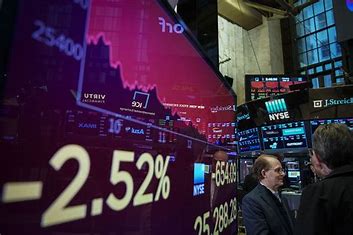Key Takeaways:
- “The S&P 500 finished at another record high on Thursday, closing out its best first quarter since 2019.”
- “The index, which set 22 record closing highs in the first three months of the year, gained 10.2% during the period.”
- “Artificial intelligence continued to propel semiconductor and data-center stocks, such as Nvidia and Super Micro Computer, higher.”
- “Unlike much of last year, it’s not just AI and the Magnificent Seven driving the index higher. Resilient corporate earnings and anticipation of interest-rate cuts have broadened the rally.”
The S&P 500 concluded Thursday at another all-time high, marking its most promising start to a year in five years. Enthusiasm surrounding artificial intelligence (AI) and expectations of potential interest rate cuts by the Federal Reserve have bolstered market sentiment and propelled stock prices.
During a subdued pre-holiday trading session, the S&P 500 edged up by 0.1% on Thursday, contributing to its year-to-date gain of 10.2%. This performance represents the highest first-quarter return for the index since 2019, during which it surged by 13%. Notably, the index achieved record highs in 22 out of the 61 trading days in the first quarter.
AI remained a significant theme driving the performance of some of the index’s top-performing stocks. Shares of Super Micro Computer (SMCI), a recent addition to the index, surged by approximately 255% over the quarter due to AI-related excitement. Nvidia (NVDA) continued its impressive performance, registering a gain of over 82% since the beginning of the year. Additionally, Micron Technology (MU) and Meta Platforms (META) also featured among the index’s top performers, with Micron Technology attributing its better-than-expected earnings to AI-driven demand.
However, unlike the previous year, where AI and the “Magnificent Seven” tech giants dominated the market rally, this year’s surge is more diversified. Resilient corporate earnings and anticipation of interest-rate cuts have played significant roles in broadening the market rally. As of Tuesday’s close, the Magnificent Seven accounted for 41% of the S&P 500’s year-to-date performance, down from 60% in the previous year. Moreover, their contribution to gains decreased further to 34% in March.
This shift is partly due to the first quarter signaling potential changes within the Magnificent Seven group. Tesla (TSLA) emerged as the poorest performer in the index, experiencing a loss of nearly 29% of its value. Similarly, Apple (AAPL) also lagged behind, witnessing a decline of nearly 11%.
Can the Market Rally Persist? Assessing the Outlook Ahead
According to a note from Deutsche Bank research strategist Jim Reid, this year’s first-quarter performance of the S&P 500 ranks 14th since 1928. While this is considered a commendable showing, it falls short of being concerning, as noted by Reid on Thursday.
Historically, the five best first quarters in the past 97 years (1975, 1987, 1943, 1930, and 1976) were followed by lackluster years. On average, the S&P 500 experienced an 8% decline for the remainder of those years. Additionally, in only 2 out of the top 13 years did the index witness greater gains between April and December than it did between January and March.
Conversely, the worst-performing first quarters tended to precede stellar years. In the bottom 15 years, the index rose by an average of 21% in the last three quarters.
Reid suggests that the optimal performance range for the first quarter seems to lie between 5-15%. For years falling within this range, the average move over the remainder of the year was approximately +9.3%.
While there could be other reasons for the market to experience declines for the remainder of 2024, Reid concludes that a robust +10% move in the first quarter is unlikely to be a contributing factor.
